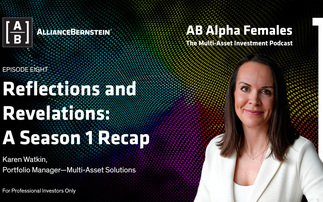The traditional 60/40 fund, which dates back to the 1950s, no longer works in the current economic climate, argues Ashley Lynn, analyst at Orbis Investments.
Risks to portfolios
Today, we think two key risks are inflation and a geopolitical tail event - and markets seem complacent about both.
First, let us look at inflation. Central bankers have a lot less power to promote growth than their recent rock-star status would imply. They can keep suppressing interest rates, but until enough confidence returns to the market to prompt investment, growth will not come.
Big Question: What is your positioning as we head into a global inflationary environment?
On the other hand, once uncertainty wanes and sentiment begins improving, a virtuous cycle can take over: as spending and investment improve, both inflation and growth result, feeding further notches up in the cycle.
We appear to be on the cusp of this change. Wages are finally rising in the US. And even if we assume this raise is nominal, we should never underestimate the power of an American with a few more dollars in his hand.
If these extra dollars are used for consumption and investment, a growth and inflation cycle could easily follow, pushing rates higher.
In this environment, selected energy shares such as Royal Dutch Shell and BP, selected banks such as Wells Fargo & Company, and selected high yield credit such as Arconic's 2037 bond look attractive - yet we can purchase these securities at discounts to our assessment of their intrinsic value.
And after years of using it as a "risk off" proxy, investors are starting to remember that gold has historically been an effective inflation hedge. We saw this in the metal's price move after the Fed raised rates earlier this month.
The second risk that appears underappreciated is war. The world has no shortage of trouble spots - from Syria to North Korea, from Iran to Ukraine, from Turkey to the South China Sea.
Perhaps none of these hotspots will spark a wider conflict, but we still see plenty of kindling. Yet markets are pricing in a Goldilocks scenario - not too hot, not too cold.
As is almost always the case, fundamentally undervalued securities that merit a place in the portfolio are also linked to underappreciated global risks.
Thankfully, many of the same underpriced assets that will protect investors from inflation can also afford protection against geopolitical risk.
Gold, apart from being a classic inflation hedge, tends to protect from war-related volatility. War in the Middle East could also reduce oil supplies, driving up the price of energy assets.
Every day the risks are new, but the logic is old: if you buy things for more than they are worth, whatever the asset class, you increase your risk of loss.











